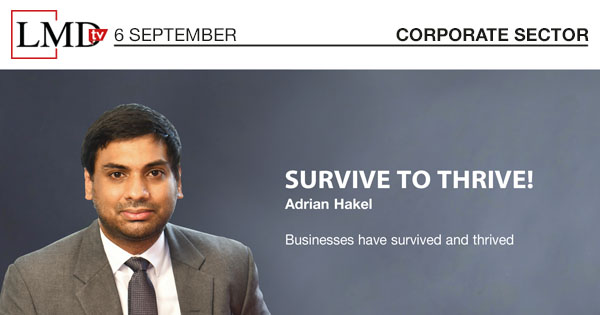
The global workforce encompasses four generations, and is referred to as the ‘generational workforce,’ says Chandi Dharmaratne. She is the Vice President of HR at a leading IT company in Sri Lanka.
Elaborating on this, she noted that such a milieu entails baby boomers representing six percent of the global workforce; gen X accounting for 35 percent; gen Y, which counts for 35 percent; and gen Z, which represents 24 percent of the labour force.
In Dharmaratne’s opinion, understanding each generation’s employment priorities is crucial: “For example, millennials prefer companies with purposeful visions while generation Z seeks organisations that they can relate to and share an emotional connection with.”
Citing a LinkedIn survey, she pointed out that different generations of employees leave their jobs for various reasons as well.
However, she stressed that differences can be overstated at times whereas inter-generational similarities may be underplayed: “Each generation can be inspired by inspirational colleagues, and the charismatic and purposeful missions of organisations.”
“Understanding these differences and similarities helps us customise engagement and development strategies to fit every generation, leading to the recruitment and retention of employees while maximising their potential,” Dharmaratne said.
Generation Z has been identified as an important segment, which she explained is largely due to its significant representation, noting that they comprise around 84 million of the US population.
“The impact of this generation on buying power and the decision-making process is immense,” Dharmaratne asserted, adding that these individuals “advise their parents on what to buy and how to adjust spending patterns.”
Expanding on this, she maintained: “When introducing a product or service to the market, you cannot ignore what attracts gen Z. We need to understand what motivates them.”
“In an organisation looking at the workforce, it makes sense for us to know what gen Z is seeking as they will be a large segment in the future,” she noted, stating: “If they’re looking for an emotional connection, we should provide it.”
Discussing how businesses can engage with this generation, Dharmaratne pointed out that they seek entertainment or instant gratification through online activities. In contrast, other generations are more likely to spend time looking for information.
“To create engagement strategies for gen Z, it’s important that we build around emotionally connecting with them,” she averred.
Commenting on the rapid pace of job creation, Dharmaratne asserted that “for any industry to be dynamic, stay ahead of the global competition and embrace new markets, it needs to keep innovating and creating new opportunities.”
As a result, there are many new job requirements. To address this, she believes that it would be more efficient for organisations to nurture this talent internally by cross and re-skilling their workforces.
Dharmaratne also highlighted the importance of fostering inclusivity in businesses, emphasising that this does not merely refer to gender: “In the IT industry, we have a concept of ‘the bench’ to be able to staff and deliver projects for global clients. If the appropriate talent is not on the bench, we won’t be able to nab that project.”
“If Sri Lanka does not have the entire bench ready to be deployed and isn’t willing to use a certain amount, the country and the world will lose out on the best talent that could be creating more value,” she stressed.
Connectivity plays an important role in building a future ready workforce but this is an area in which Sri Lanka is lacking. In Dharmaratne’s view, poor access to electronic devices and information can negatively impact children, and hamper their ability to make decisions.
“If younger generations are to be future ready, it is critical that they have access to information, which will be possible through digital platforms,” she concluded.





